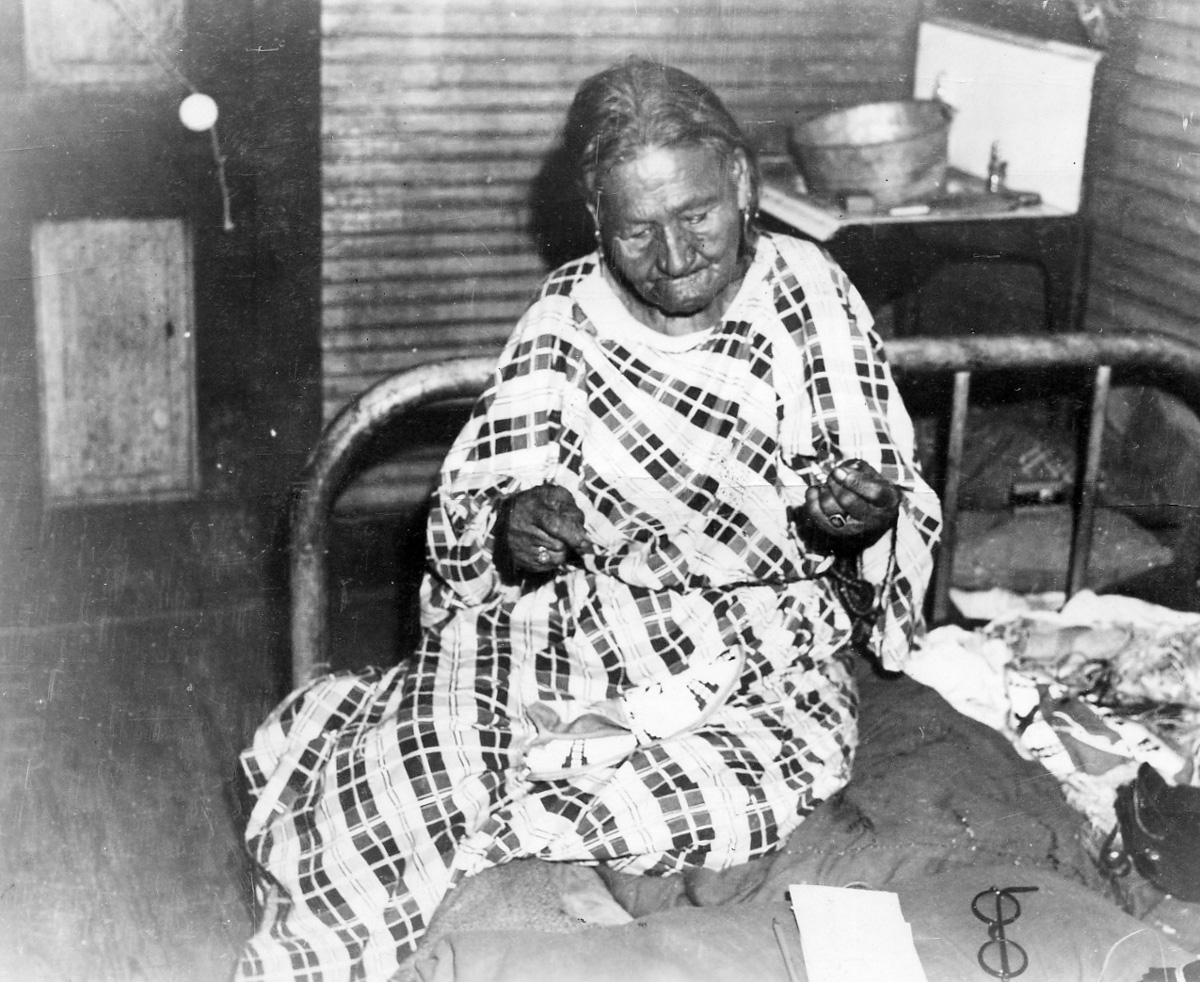The Encyclopedia of Oklahoma History and Culture
BEADWORK, AMERICAN INDIAN.
Bead making has a long duration in Native North America, with seeds, stone, clay, wood, bone, horn, pearl, shell, antler, and other natural materials used to fashion beads for necklaces and other decorative purposes. Although a foreign trade item, glass beads were quickly assimilated into the aesthetic traditions of indigenous communities throughout the Western Hemisphere. As beads of uniform size and varied color became available in sufficient quantity, beadwork quickly became a dominant decorative form in many American Indian communities. The advent of small-sized "seed beads" quickly diminished the importance of painting, porcupine quill embroidery, and other decorative techniques on clothing, horse gear, utensils, and ceremonial items. American Indian beadwork in Oklahoma incorporates techniques, styles, and designs from dozens of tribal communities. These diverse historic traditions led to the development of an "Oklahoma style" of beadwork that both preserves distinct tribal elements and benefits from their admixture.
A variety of techniques are used to secure beads in place to create patterns and designs. The major types of beadwork produced by American Indians in Oklahoma include lazy stitch, loom work, appliqué, and net techniques. Lazy stitch, in which small strings of beads are attached to the base material at each end, is most often used to cover large areas on dresses, moccasins, cradleboards, and horse gear. Loomed beadwork, created on either a fixed or flexible set of warp threads, creates strips for belts, garters, and armbands. Single- and-double needle appliqué techniques produce medallions and free-form floral and abstract designs on clothing and blankets. Net beadwork, often referred to as "gourd" or "peyote" stitch, is used to cover fan and rattle handles and other tubular objects.
Beadwork provides a rich expressive medium in which color, contrast, and design permit a limitless number of distinct patterns and compositions. Design elements include both realistic and abstract representations of natural phenomena, religious cosmology, and purely aesthetic expressions in line and form.
Contemporary Oklahoma beadwork artists produce works of extremely high quality and diversity. While the majority of modern beadwork is commissioned for use in American Indian communities, beadwork for the tourist and collector markets continues to provide an important source of income for artists. A number of Oklahoma's bead workers have made significant contributions to the art form, developing innovative applications of traditional techniques.
See Also
BASKETRY–AMERICAN INDIAN, FOLK ART, FOLKLIFE, POTTERY–AMERICAN INDIAN, TRADITIONAL ARTS–AMERICAN INDIAN
Bibliography
Jill Alden, Contemporary Native American Beadwork: The Exquisite Art (New York: Dolph Publishing, 1999).
Lois Sherr Dubin, The History of Beads: From 30,000 B.C. to the Present (New York: Harry N. Abrams, Inc., 1995).
Barbara A. Hail, Hau, Kola!: The Plains Indian Collection of the Haffenreffer Museum of Anthropology (Bristol, Conn.: Brown University Press, 1980).
William C. Orchard, Beads and Beadwork of the American Indians, Contributions, Heye Foundation, Vol. 11 (New York: 1975).
Citation
The following (as per The Chicago Manual of Style, 17th edition) is the preferred citation for articles:
Daniel C. Swan, “Beadwork, American Indian,” The Encyclopedia of Oklahoma History and Culture, https://www.okhistory.org/publications/enc/entry?entry=BE002.
Published January 15, 2010
© Oklahoma Historical Society



